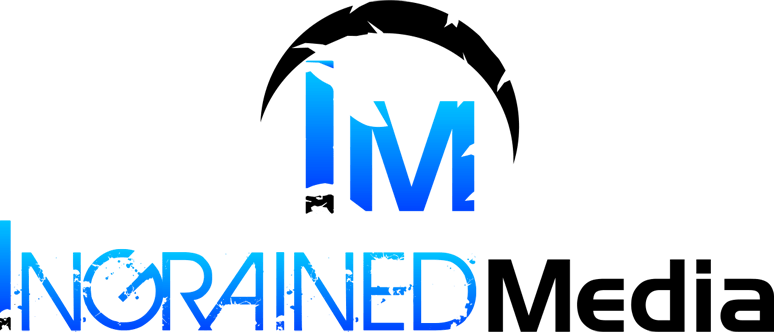Masters of Public Relations: The Art of Corporate Communication
Public relations sits at the core of shaping an organization’s image and its pivotal relationships with stakeholders. This role becomes increasingly crucial as companies navigate public opinion in a digitally connected world. I
Together we’ll explore the strategic processes of our PR services at Ingrained Media as well as its impact on corporate reputation and the multitude of specializations within the PR landscape. Expect insights on crisis management, internal relations, media relations, and the burgeoning influence of social media—all vital in sculpting the public face of any entity.
Key Features
Public relations is a strategic communication discipline that shapes public discourse, manages organizational image, and fosters relationships with various stakeholders, including government entities. Our team has been assisting clients with public relations for over 20 years.
Several specializations within PR, such as media relations, government relations and community relations, play critical roles in maintaining a positive public image, with effective communication strategies essential for each specialization.
The impact of digital transformation in PR is significant, with ethics, digital technologies, data-driven approaches, and social media now foundational elements that shape the direction and effectiveness of public relations strategies.
The Core of Public Relations
Public relations is a multifaceted discipline that involves the strategic communication process to manage an organization’s public image to society and foster mutually beneficial relationships. As public relations professionals, it is our responsibility to formulate and execute PR strategies that uphold the organization’s image and safeguard its reputation.
Such efforts significantly contribute to a company’s success, as PR has the power to shape public discourse and influence the public’s perception. At Ingrained Media we utilize various methods such as corporate press releases, interviews, earned media, and creating compelling social media content to present the brand in a favorable manner.

- Our Strategic Communication Process
- Building Mutually Beneficial Relationships as Public Relations Specialists
- delivering the most effective message
- utilizing appropriate channels
- targeting the audience
- aiming to accomplish specific objectives
Public Relations Specializations - The Need For A Public Relations Specialist

Several specializations exist within the nuanced world of PR, including media and public relations manager,, government relations, and community relations, each playing a crucial role in maintaining a positive public image.
Effective government relations strategies include building close relationships with elected officials through consistent communication, exemplified by Walmart, and establishing a global government affairs center of excellence, as demonstrated by 3M.
Conversely, our PR strategies for community relations encompass donating goods and services, volunteering time, investing financially, participating in events, and sponsoring political campaigns and initiatives.
First we must identify who are you sailing for? Identifying your target audience is like understanding who your passengers are. It involves conducting research to understand their demographics, interests, and behaviors, which in turn informs the creation of tailored content.
- Media Relations
- Government Relations
- Community Relations
Media relations are an integral part of public relations, establishing interactions with the press and media. This includes activities like scheduling press conferences, coordinating interviews, and composing press releases to convey important messages to the public.
Organizations can derive significant benefits from implementing paid media for relations, as it serves as a form of complimentary advertising, offering them favorable exposure and heightened visibility without the direct expenses linked to conventional advertising.
To succeed in media relations, it’s essential that together we establish a clear plan with defined goals, objectives, messages, tactics, and evaluation methods, in addition to employing creative tactics and adopting a proactive approach.
- Facilitating the interaction between organizations and the government
- Lobbying to influence laws and regulations
- Monitoring legislative and regulatory developments.
Community relations, a core component of PR, focuses on enhancing an organization’s reputation within the local or regional community through direct engagement activities such as events, charitable initiatives, or participation in local projects. This form of PR can enhance the visibility of an organization and facilitate the establishment of connections managing relationships within the community, a particularly vital aspect for local or small businesses.
The recommended best practices in customer relations and community relations for businesses include engaging in dialogues with community members, seeking their feedback, and actively participating in community events.
Social Media and A Public Relations Society
- Development of content for social media platforms
- Analysis of performance metrics
- Monitoring of online trends
- Staying current with the latest social media tools and best practices.

- Developing Social Media Programs
- Managing Online Reputation
- Understanding audience needs
- Setting clear objectives and goals
- Understanding your audience
- Formulating a content strategy
- Establishing a content calendar
- Engaging with your community
- refraining from assigning blame
- maintaining a respectful demeanor
- avoiding defensiveness
- demonstrating a sincere approach to resolving the issue
- ensuring that the customer feels acknowledged.
Real-World Public Relations Examples

- Coca-Cola’s ‘Create Real Magic’
- Oatly’s ‘FckOatley’ Website
- Spotify: Wrapped
- Dove’s ‘#TheSelfieTalk’
- Positive PR Success Stories
- Negative PR Lessons Learned
Pursuing a Career in Public Relations
For those drawn to the PR field and contemplating it as a career option, it’s important to be aware of the necessary qualifications and skills. Individuals aspiring to pursue a career in public relations often need to acquire a relevant college degree in fields such as journalism, communications, or marketing. Along with the academic qualifications, a successful PR professional must demonstrate a blend of robust communication, problem-solving, and relationship-building skills.

- Educational Pathways
- Essential Skills for PR Professionals
- Potential Careers in Public Relations
- marketing intern
- editorial intern
- public relations intern
- content marketing intern
- social media intern
The Future of Public Relations

- A focus on multimedia content
- Adoption of a human and authentic approach
- Utilization of social media
- Integration of data-driven insights
- Incorporation of AI into PR practices
- Digital Transformation and PR
- Ethical Considerations in PR
Public relations is not immune to the age of digital transformation. This transformation entails the integration of computer-based technologies into PR strategies, resulting in more efficient, rapid, and cost-effective communication. The impact of digital transformation on public relations strategies is evident through the introduction of tools and platforms that improve communication and outreach.
One example is the substantial role of social media in PR, providing new channels for engagement and amplification of messages. To meet the demands of digital transformation, PR professionals can employ a data-driven approach and utilize insights to shape their communications campaigns further.
Ethical considerations will persist in holding a pivotal role within the PR field. Honesty and transparency, for instance, are essential for building credibility and trust, which are essential for effective communication and maintaining a positive reputation. Unethical communication has the potential to erode trust, whereas ethical behavior, such as fact-checking and transparency, can enhance credibility.
Choosing Our Public Relations Services
Public relations isn’t just a function; it’s an art form that shapes how the world sees your brand. In this ever-evolving digital age, managing your public image and nurturing beneficial relationships has never been more crucial. Our team is at the forefront of this dynamic landscape, expertly navigating the realms of media, government, and community relations.
Imagine a partnership where every aspect of your public image is meticulously crafted and strategically managed. With the integration of social media and digital innovation, we offer not just solutions but a visionary approach to public relations. The future of PR is here, and it’s digital, ethical, and impactful.
Are you ready to transform your brand’s negative public relations persona? Join us on this journey of effective communication and robust relationship-building. Whether you’re looking to refine your existing PR strategy or embark on a new voyage in the world of public relations, our expertise is your advantage. Let’s cultivate trust, authenticity, and a stellar public image for your brand. Your journey towards unparalleled public relations excellence starts with us!
Frequently Asked Questions
The main role of public relations is to shape an organization's image, build the brand, spread the organization's message, and minimize the impact of negative publicity. This involves influencing, engaging, and building relationships with key stakeholders to shape public perception.
Public relations offers daily engagement with various stakeholders, allowing for strategic content creation and a positive impact on public perception. The role involves interaction with internal and external parties, and opportunities for content development and media relations are endless. Public relations specialists shape public perception and increase awareness publicly traded companies through media releases and social media programs.
To achieve success as a public relations professional, it is essential to have strong communication, problem-solving, and relationship-building skills, in addition to specialized knowledge in strategic communication and media dynamics. These fundamental skills are crucial for carrying out PR responsibilities effectively.
Government relations in public relations is significant because it aims to build public trust, inform people about policies, and communicate messages from the administration. This helps in maintaining transparency and credibility.
Digital transformation in public relations refers to the incorporation of computer-based technologies into PR strategies to enhance communication efficiency and cost-effectiveness. This integration leads to quicker and more efficient communication.

